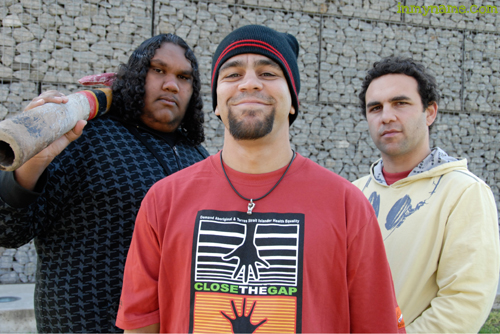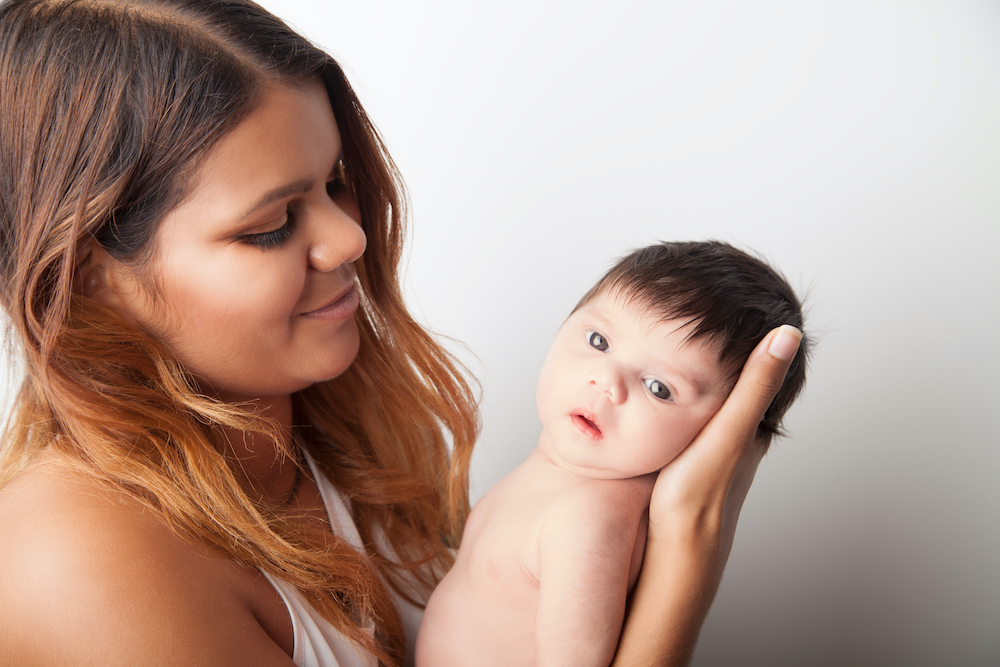
In Australia, Aboriginal and Torres Strait Islander (TSI) people are the traditional custodians of the land. Like many Indigenous people in other parts of the world, Indigenous Australians suffer from a significant health inequality compared to non-Indigenous Australians (Vos. et al, 2009).
In the current study, Charlson et al (2021) have investigated a cohort of Indigenous people with psychosis in remote Australia to characterise their multimorbidity status and risk factors.

Research conducted in Australia on Indigenous people’s mental health (Aboriginal and Torres Strait Islander people) suggests that they are more likely to suffer from a significant health inequality compared to non-Indigenous people.
Methods
The study uses the data collected and maintained by the Remote Area Mental Health Service (RAMHS) under Queensland Health. The RAMHS database was established in 1992 and contains the complete psychiatric clinical records of patients seen by the RAMHS. For the current study, one of the psychiatrists who worked for the RAMHS, extracted data from all the Indigenous patients who met the criteria for a psychotic disorder between 1992 and 2015. In addition to the psychiatric diagnoses, the data were collected for physical conditions and the following groups of risk factors:
- Biological and neurodevelopmental factors
- Environmental and contextual factors
- Behavioural factors
Indigenous people with Aboriginal heritage were compared to those with TSI (Torres Strait Islander) heritage.
Results
Overall, 426 Indigenous people with psychosis were included in the study. Of which, 259 people (60.7%) identified as Aboriginal, 131 people (30.8%) identified as TSI, and 36 people (8.5%) identified as both Aboriginal and TSI. For the main analyses, people who identified as both Aboriginal and TSI were removed, leaving 390 participants in the study.
In terms of the number of comorbid mental and substance use disorders, the mean number of comorbid diagnoses for Aboriginal people was 1.0 with TSI people having the mean of 0.4 comorbidities. Compared to TSI people, Aboriginal people had a significantly increased risk of comorbid substance use in alcohol (odds ratio [OR]: 8.3 with 95% confidence interval [CI] between 4.0 and 17.2), cannabis (OR 3.5, 95% CI: 1.6 to 7.8), and both alcohol and cannabis combined (OR 4.6, 95% CI: 2.4 to 8.6).
The mean number of comorbid physical conditions in Aboriginal people was 1.0 compared to 0.4 for TSI people. When the two groups were combined, the most frequently reported physical conditions were injury (29%) followed by cardiovascular disease (21%) and diabetes (18%). Compared to TSI people, Aboriginal people were at significantly increased risk of respiratory disease (OR 3.9, 95% CI: 1.1 to 14.0), sexually transmitted infection (OR 10.5, 95% CI: 2.4 to 46.1) and physical injury (OR 18.5, 95% CI: 5.48 to 62.2).
In terms of risk factors, Aboriginal people experienced a mean of 3.6 risk factors while TSI people experienced 1.7 risk factors. Compared to TSI people, Aboriginal people were significantly more like to report the following risks factors:
- Biological and neurodevelopmental factors:
- Mother drinking during pregnancy (OR 14.5, 95% CI: 4.4 to 47.8)
- Childhood infections and hearing impairment (OR 15.2, 95% CI: 2.0 to 114.0)
- Family history of suicide (OR 5.5, 95% CI: 1.9 to 15.7)
- Environmental and contextual factors:
- Family history of heavy substance use (OR 8.0, 95% CI: 4.4 to 14.4)
- Loss of a loved one (OR 2.4, 95% CI: 1.3 to 4.4)
- Separation from parents at a young age (OR 2.3, 95% CI: 1.3 to 4.3)
- Incarcerated prior to diagnosis (OR 2.1, 95% CI: 1.0 to 4.3)
- Behavioural factors:
- Patient self-harm or suicidality (OR 8.0, 95% CI: 1.0 to 61.8)
- Previous alcohol use (OR 3.1, 95% CI: 2.0 to 4.9)

The majority of the Indigenous people in this study (60%) experienced a comorbid mental health or substance abuse disorder, while 45% of the participants had experiences of physical illness.
Conclusions
The authors concluded:
Our data powerfully expose the perinatal and early environment of Indigenous children who later developed a psychotic disorder.
Another striking finding from the study is that TSI people seem to do better than Aboriginal people. We argue that the data from the study powerfully expose the perinatal and early environment of Aboriginal children who later developed a psychotic disorder, and the significantly more burdensome disadvantages and challenges they face compared to TSI children.

The findings of this study: “powerfully expose the perinatal and early environment of Indigenous children who later developed a psychotic disorder.”
Strengths and limitations
We are not sure if this is a strength per se, but the story behind the RAMHS dataset blows our minds. To establish and maintain the dataset, three psychiatrists in remote Queensland painstakingly collected detailed and high-quality clinical data for Indigenous people over thirteen years (Gynther. et al, 2019). It is pleasing to see the routinely collected clinical data being utilised and examined so extensively in research.
The authors acknowledge that the lack of comparison groups (either non-psychotic Indigenous people, or non-Indigenous people) is a major limitation of the study. This problem is two-fold:
- First, we do not know if these challenges and risk factors are unique to having a psychotic disorder among Indigenous people, or if they are present in Indigenous people with other mental disorders (or social and emotional difficulties).
- Second, we also do not know if these issues are unique to Indigenous people in these specific remote areas or if everyone living in these areas, regardless of ethnicity, face similar sets of difficulties.

More research with comparison groups should be conducted to have a better understanding of indigenous people’s mental and physical health.
Implications for practice
As mentioned above, the lack of a comparison group limits the practical implication of the study. Without putting the findings in the context of non-Indigenous people or people outside of Cape York and the Torres Strait, it is difficult to appreciate what these findings mean in the wider context.
It is also important to further explore the reasons behind the significant difference seen between the two Indigenous groups in Australia. This is particularly the case given Aboriginal people make up approximately 90% of the Indigenous population in Australia. Why are there so many differences between the two Indigenous groups living in the same remote areas of Queensland? What makes TSI people less vulnerable to multimorbidity? Can we transfer and translate these factors into Aboriginal communities?
Nevertheless, the current study highlights the importance of social and cultural determinants for the emotional and social wellbeing of Indigenous people who are impacted by the effect of colonisation and associated disempowerment through intergenerational trauma. The National Aboriginal Community Controlled Health Organisation defines Aboriginal health as follows (NACCHO 2021):
Aboriginal health means not just the physical well-being of an individual but refers to the social, emotional and cultural well-being of the whole Community in which each individual is able to achieve their full potential as a human being thereby bringing about the total well-being of their Community. It is a whole of life view and includes the cyclical concept of life-death-life.
Even for a “biological” psychiatric illness like psychosis, the current study shows that the influence and impact of environmental and contextual factors were significant for both mental health and physical health related complications.
One of the most powerful concepts in epidemiology is the Prevention Paradox (Rose, 1981). In essence, the theory argues that “a measure that brings large benefits to the community offers little to each participating individual”. For example, providing treatment to reduce blood pressure by a small degree to a large number of people at low risk is more effective at reducing the community burden than providing assertive care for a small number of people at high risk.
Putting this in the context of Indigenous health, we arrive at the question: How can we improve the wellbeing of the community as a whole? To reduce the health inequality between Indigenous people and non-Indigenous people, would it be more effective to provide less intensive care (e.g. psychotherapy provided by a trained mental health worker rather than a psychiatrist) to a wider group of population (e.g. providing support for a family as a system rather than focusing on an individual member as a patient)? At a population level, could addressing the social determinants like unemployment and housing be more effective than prescribing medication or providing psychotherapy?
As clinicians, we strive to cure the individual in front of us. To help a group of individuals – a community, however, we may need to take a different approach to be effective.

Could addressing unemployment and housing be more effective than prescribing medication or providing psychotherapy?
Statement of interests
Shuichi Suetani is affiliated with Queensland Centre for Mental Health Research as are two of the authors of the primary paper.
Both Shuichi Suetani and Leshay Chong are employed by the Institute for Urban Indigenous Health.
Links
Primary paper
Charlson, F., Gynther, B., Obrecht, K., Waller, M., and Hunter, E. (2021) Multimorbidity and vulnerability among those living with psychosis in Indigenous populations in Cape York and the Torres Strait. Australian & New Zealand Journal of Psychiatry, 55 (9), 892 – 902.
Other references
Gynther, B., Charlson, F., Obrecht, K., Waller, M., et al. (2019) The epidemiology of psychosis in Indigenous populations in Cape York and the Torres Strait. EClinicalMedicine, 10:68 – 77.
Aboriginal Community Controlled Health Organisations (ACCHOs)
Rose, G. (1981) Strategy of prevention: lessons from cardiovascular disease. British Medical Journal, 282 (6279): 1847 – 1851.
Vos, T., Barker, B., Begg, S., Stanley, L., and Lopez, A, D. (2009) Burden of disease and injury in Aboriginal and Torres Strait Islander Peoples: the Indigenous health gap. International Journal of Epidemiology, 38 (2), 470 – 477.
Photo credits
- Photo by David Clode on Unsplash
- CC BY 2.0 Alan Brown
- Photo by Lê Tân on Unsplash
- Photo by Simon Maisch on Unsplash
- Photo by Camylla Battani on Unsplash
